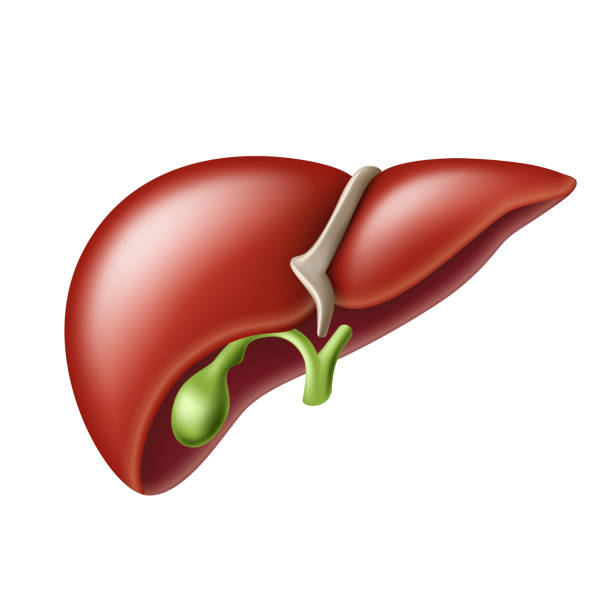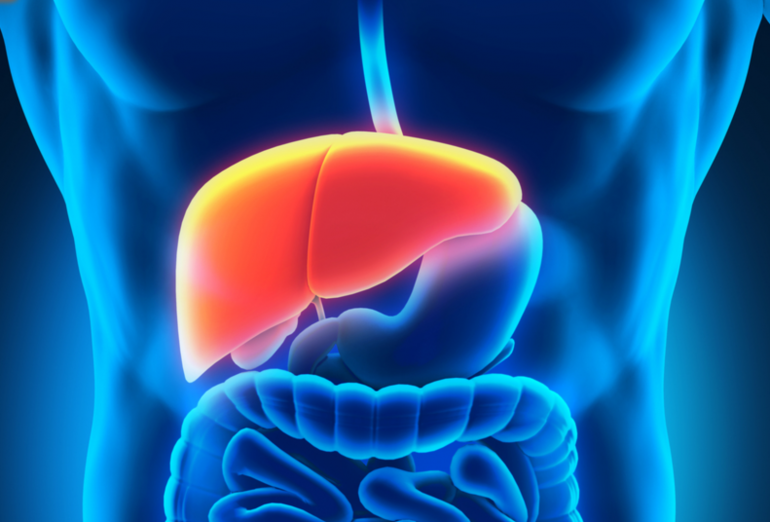 "Hepatoprotective" refers to substances or actions that help protect the liver from damage caused by toxins, diseases, or other harmful agents. These substances, often derived from plants or pharmaceuticals, are known to support liver health, promote repair, and enhance its functions. The liver is one of the most important organs of the body, performing a fundamental role in the regulation of diverse processes, among which metabolism, secretion, storage and detoxification of endogenous and exogenous substance are prominent. Due to these functions, hepatic disease continues to be among the main threats to public health, and they remain problems throughout the world. Despite enormous advances in modern medicine, there are no completely effective drugs that stimulate hepatic functions, that offer complete protection of the organ, or that help to regenerate the hepatic cells.
"Hepatoprotective" refers to substances or actions that help protect the liver from damage caused by toxins, diseases, or other harmful agents. These substances, often derived from plants or pharmaceuticals, are known to support liver health, promote repair, and enhance its functions. The liver is one of the most important organs of the body, performing a fundamental role in the regulation of diverse processes, among which metabolism, secretion, storage and detoxification of endogenous and exogenous substance are prominent. Due to these functions, hepatic disease continues to be among the main threats to public health, and they remain problems throughout the world. Despite enormous advances in modern medicine, there are no completely effective drugs that stimulate hepatic functions, that offer complete protection of the organ, or that help to regenerate the hepatic cells.  Thus, it is necessary to identify pharmaceutical alternatives for the treatment of liver diseases, with the aim of these alternatives being more effective and less toxic. The use of some plants and the consumption of different fruits have played basic roles in human health care and diverse scientific investigation have indicated that, in those plants and fruits so identified, their beneficial effects can be attributed to the presence of chemical compounds that are called phytochemicals. The present review had as its objective the collection of data based on research conducted into some fruits and plants , which are consumed frequently by humans and which have demonstrated hepatoprotective capacity, as well as an analysis of a resin and some phytochemical extract from fruits, plants, yeast and algae, which have been evaluated in different models of hepatoprotective
Thus, it is necessary to identify pharmaceutical alternatives for the treatment of liver diseases, with the aim of these alternatives being more effective and less toxic. The use of some plants and the consumption of different fruits have played basic roles in human health care and diverse scientific investigation have indicated that, in those plants and fruits so identified, their beneficial effects can be attributed to the presence of chemical compounds that are called phytochemicals. The present review had as its objective the collection of data based on research conducted into some fruits and plants , which are consumed frequently by humans and which have demonstrated hepatoprotective capacity, as well as an analysis of a resin and some phytochemical extract from fruits, plants, yeast and algae, which have been evaluated in different models of hepatoprotective Hepatoprotective Agents:
Silymarin:
Extracted from milk thistle, widely used for liver detoxification. Silymarin is a natural compound derived from the seeds of the milk thistle plant (Silybum marianum). It is a mixture of flavonolignans, including silibinin, isosilibinin, silydianin, and silychristin, which are collectively responsible for its hepatoprotective properties. Silymarin exerts its action by antioxidant, (Neutralizes free radicals and reduces oxidative stress in the liver.Promotes the regeneration of damaged liver cells) , anti-inflammatory ( which is often associated with liver damage and chronic liver diseases.), immunomodulattory, antiproliferative, antifibrotic, and antiviral activities. Silymarin is composed of an isometric mixture of seven flavonolignans silybin A, silybin B isosilybin A, isosilybin B, silychristin A, silychristin B and silydianin and one flavonoid taxifolin. Silibinin, a mixture of silybin A and silybin B, is considered responsible for hepatoprotective functions of silymarin. Purification of these compounds in gram scale allowed for testing the hepatoprotective effects of pure compound in various assays. Some individuals flavonolignans showed stronger hepatoprotective functions than silymarin. Only isosilybin B, showsed high toxicity to human hepatoma cell line. Isosilybin A, taxifolin, and silibinin were the most effective hepatoprotectors . Isosilybin B showed the highest antiproliferative activity against human prostate carcinoma cell line. Biosynthesis of silymarin flavonolignans occurs by oxidative coupling between the phenylpropanoid coniferyl alcohol and the flavonoid taxifolin. Flavonoid biosynthesis involves culture studies have largely contributed to our current understanding of silymarin biosynthesis.
Benefits of Silymarin:
Liver Protection:
Shields liver cells from toxins like alcohol, drugs, and environmental pollutants.
Helps in managing liver diseases such as hepatitis, cirrhosis, and non-alcoholic fatty liver disease (NAFLD).
Improves Liver Function:
Enhances bile production, aiding in digestion and detoxification.Supports the liver's natural repair mechanisms.
Common Uses:
Treatment of chronic liver conditions. Protection against liver damage from chemotherapy or certain medications (e.g., acetaminophen).As a dietary supplement for general liver health.
Precautions:
Side Effects: Generally well-tolerated but may cause mild gastrointestinal issues or allergic reactions in some individuals.
Interactions: Can interact with medications like anticoagulants, leading to potential complications. Consult a healthcare provider before use.
Curcumin:
Found in turmeric, known for its anti-inflammatory and antioxidant properties. Curcumin is the primary active compound found in the spice turmeric (Curcuma longa), known for its vibrant yellow color and extensive medicinal properties. It belongs to the family of polyphenols and is widely recognized for its anti-inflammatory, antioxidant, and hepatoprotective effects. It is commonly used as a spice in cooking and a yellow Pigments in the food processing industry.
Health Benefits Of Curcumin
Anti-inflammatory:
Chronic inflammation is caused hy many external or intrinsic factors ,and it is considered a key mediator for diseases. Curcumin can not only reduce the oxidative stress, but also protect against inflammation effectively via modulating pro-inflammatory cytokines and related signaling pathways,such as NF-κB, peroxisome, proliferator-activated receptor-gamma and myeloid differentiation protein 2-TLR co-receptor (TLR4-MD2) signaling pathways.
It reduces inflammation by inhibiting pro-inflammatory markers such as cytokines and enzymes like COX-Beneficial in managing conditions like arthritis, inflammatory bowel disease, and chronic inflammation.
Antioxidant
The imbalance between free radicals and the body's defenses system against oxidative stress cause various chronic diseases. An excessive production of reactive oxygen spices can induce oxidative stress and damage essential biomolecules, while antioxidant compounds, can protect the human body from free radicals and ROS effects, attenuation the progress of many chronic diseases It neutralizes free radicals and boosts the body's own antioxidant enzymes, and Protects cells from oxidative damage, slowing the aging process and reducing the risk of chronic diseases.
Hepatoprotective
Supports liver detoxification and reduces liver inflammation.
Prevents liver damage caused by toxins, alcohol, or fatty liver disease.
Supports Cardiovascular Health
Improves endothelial function, which regulates blood pressure and circulation.
Reduces bad cholesterol (LDL) and triglycerides while promoting heart health.
Anti-Cancer Potential
Inhibits the growth of certain cancer cells and blocks pathways involved in tumor growth.
Helps improve the efficacy of chemotherapy and reduce side effects.
Boosts Brain Function
Crosses the blood-brain barrier, helping in neuroprotection.
Shows promise in preventing or managing Alzheimer's disease and depression.
Challenges with Curcumin
Poor Bioavailability:
Curcumin has low absorption in the body, but combining it with piperine (from black pepper) or consuming it with fats significantly enhances its bioavailability.
Common Forms And Usage:
Turmeric Powder: Used in cooking or teas.
Curcumin Supplements: Available in capsules, often combined with piperine for better absorption.
Topical Applications: Used in skincare for its anti-inflammatory and healing properties.
Precautions
Side Effects: High doses may cause stomach upset, nausea, or dizziness.
Drug Interactions: May interact with blood thinners, diabetes medications, or antacids. Consult a doctor before using supplements, especially for therapeutic purposes.
Glycyrrhizin:
Derived from licorice root, it helps protect the liver from chemical damage.
Glycyrrhizin is a natural compound extracted from the root of licorice plant (Glycyrrhiza glabra). It is responsible for the sweet taste of licorice, being about 30–50 times sweeter than sugar. Beyond its sweetness, glycyrrhizin is widely recognized for its medicinal properties, particularly in liver protection, inflammation reduction, and antiviral activity. It is a triterpeniod saponins glycoside being either the Ca2+ or K+ salt of Glycyrrhizin acid. Upon hydrolysis, the glycosides loses its sweet tastvan is converted to the aglycone aglycyrrhetinic acid plus two molecules of glucuronic acid . The acid form is not particularly water soluble, but it's ammonium salt soluble in water at PH greater than 4.5. Although sweet, the taste of Glycyrrhizin is different from that of sugar. The sweetness of Glycyrrhizin has a slower onset than sugar, and lingers in the mouth for some time.
Benefits of Glycyrrhizin
Hepatoprotective (Liver Protecti)
Reduces liver inflammation and prevents damage from toxins and viruses.
Often used in managing hepatitis B and C.
Anti-inflammatory
Inhibits the production of pro-inflammatory molecules, making it useful for treating conditions like eczema, arthritis, and respiratory inflammation.
Antiviral Properties
Demonstrates activity against viruses like hepatitis, herpes simplex, and even influenza by inhibiting their replication.
Boosts the immune response to fight infections.
Gastroprotective
Helps soothe ulcers and reduce symptoms of gastritis by promoting mucus secretion in the stomach lining.
Anti-allergic Effects
Reduces symptoms of allergies and asthma by modulating immune responses.
Uses of Glycyrrhizin
Treatment of chronic hepatitis and liver-related conditions.
Ingredient in traditional remedies for coughs, sore throats, and digestive issues.
Found in skincare products for its soothing and anti-inflammatory properties.
Precautions and Side Effects
Risk of Hypertension: Excessive consumption may lead to potassium loss, sodium retention, and increased blood pressure (a condition called pseudoaldosteronism).
Electrolyte Imbalance: Long-term use can cause low potassium levels, leading to muscle weakness or irregular heart rhythms.
Pregnancy: Should be avoided during pregnancy as it may increase the risk of preterm labor.
Safe Usage Recommendations
Use deglycyrrhizinated licorice (DGL) supplements if taking it long-term to minimize side effects.
Always consult a healthcare provider, especially if you have existing health conditions like high blood pressure, kidney disease, or heart issues.
Antioxidants:
Vitamins C and E play a role in reducing oxidative stress on liver cells.An antioxidant is a molecule that helps protect cells in the body from damage caused by oxidative stress, which occurs when there is an imbalance between free radicals (unstable molecules) and the body's ability to neutralize them. Free radicals can damage DNA, proteins, and cell membranes, contributing to aging and various diseases.
Antioxidants, How Does It Work?
Antioxidants neutralize free radicals by donating electrons, thereby preventing them from causing harm to cells. This process reduces the risk of chronic diseases and promotes overall health.
Types of Antioxidants
Endogenous Antioxidants (produced by the body):
Glutathione: A powerful antioxidant synthesized in cells.
Superoxide Dismutase (SOD): Protects cells from damage by superoxide radicals.
Catalase: Breaks down hydrogen peroxide into water and oxygen.
Exogenous Antioxidants (from diet or supplements):
Vitamin C: Found in citrus fruits, strawberries, and bell peppers.
Vitamin E: Found in nuts, seeds, and vegetable oils.
Beta-carotene: Found in carrots, sweet potatoes, and spinach.
Polyphenols: Found in green tea, dark chocolate, and berries.
Selenium: Found in Brazil nuts, seafood, and whole grains.
Health Benefits of Antioxidants
Reduces Oxidative Stress: Helps protect against cellular damage and chronic diseases.
Supports Heart Health: Improves blood vessel function and reduces inflammation.
Boosts Immune Function: Enhances the body’s ability to fight infections and diseases.
Protects Skin: Reduces signs of aging and protects against UV damage.
Promotes Brain Health: Reduces the risk of neurodegenerative diseases like Alzheimer's.
Sources of Antioxidants
Fruits: Berries, oranges, grapes, and kiwi.
Vegetables: Spinach, kale, broccoli, and carrots.
Nuts And Seeds: Almonds, walnuts, flaxseeds, and sunflower seeds.
Beverages: Green tea, coffee, and red wine (in moderation).
Precautions
While dietary antioxidants are beneficial, excessive supplementation can lead to adverse effects, such as reduced natural antioxidant production or interference with certain medications. Always consult a healthcare provider for guidance.
These agents are often used in treating liver conditions like hepatitis, fatty liver disease, and cirrhosis. However, medical advice should be sought before using them.




